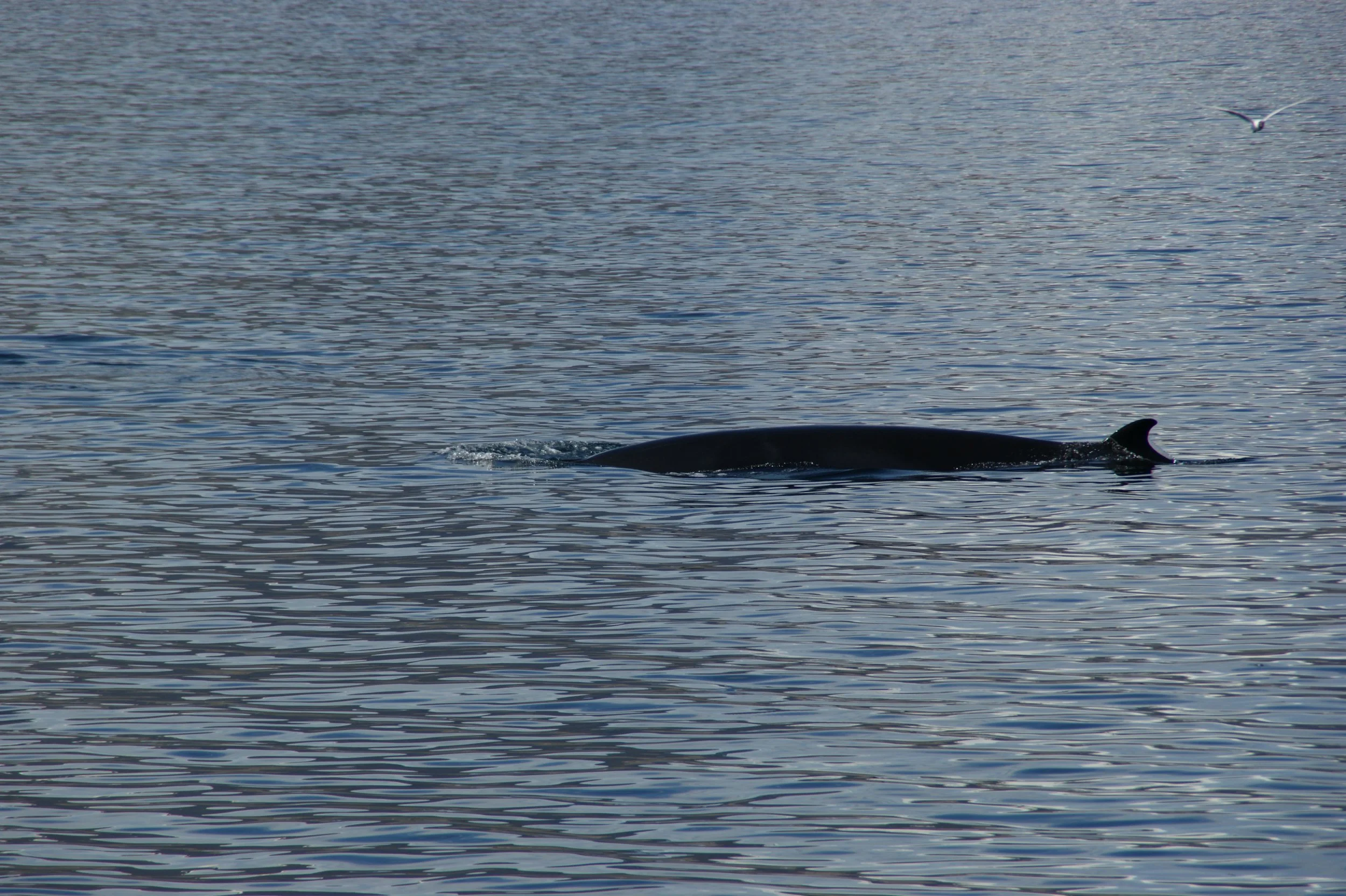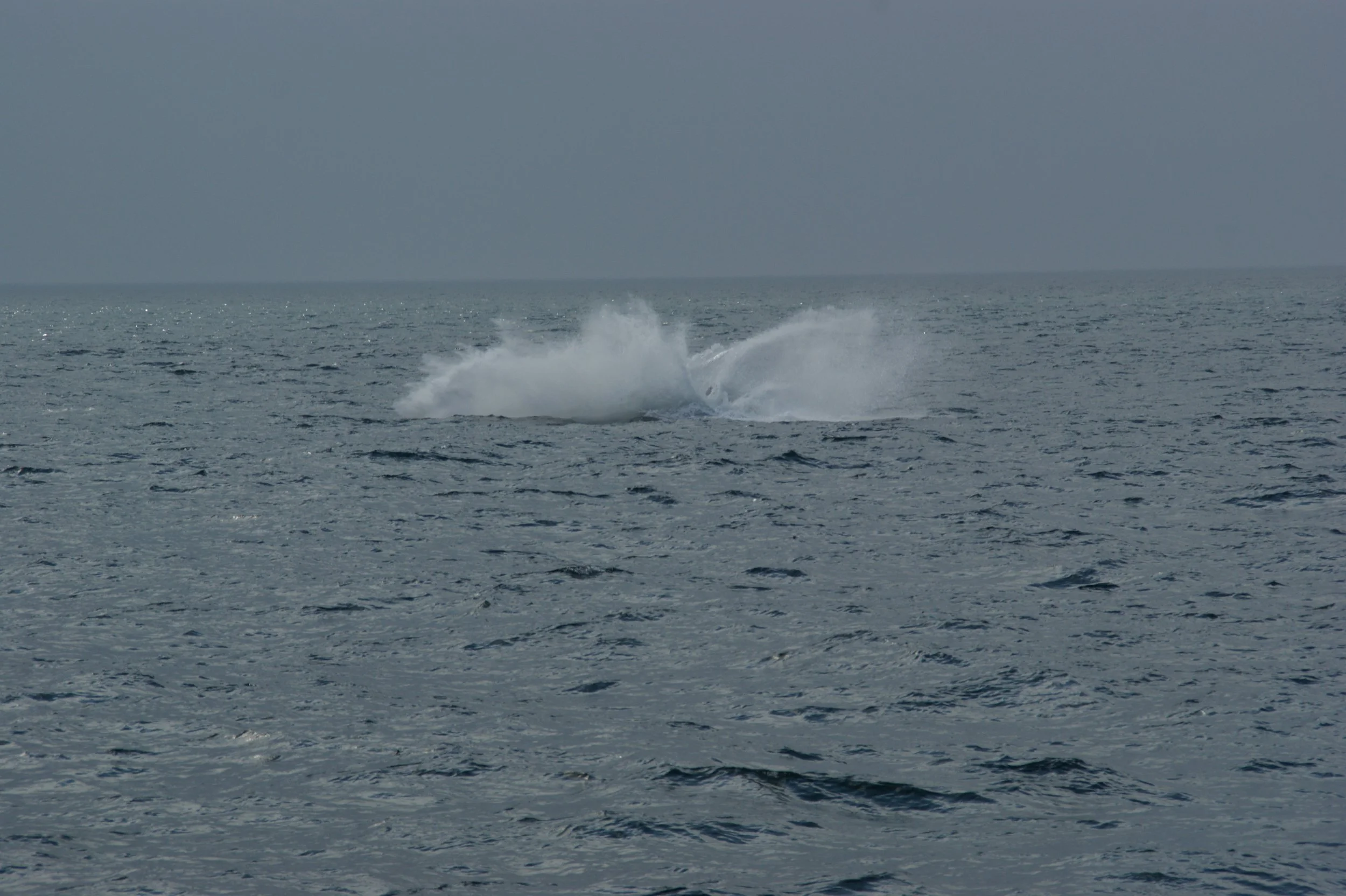The Trail of the Whale
Introduction
Did you spot the dolphin on the image on the top of this page? Then you are in the right place! Getting your head out of the clouds, this map will show you locations from where you might be lucky enough to spot some real whales, dolphins and porpoises (cetaceans). All the locations are packed with interesting facts on history, popular landmarks, nature facts and of course, what cetaceans to expect to find.
Most of the locations are located along the Ring of Kerry Road and the Skellig Ring Road with easy access and parking facilities. Some will require a walk or hike of up to 2 hours, ranging from easy to medium level of difficulty. And some locations are only reachable by boat but mentioned due to their cultural and natural importance to the peninsula.
What to bring
If you want to increase your chances of finding cetaceans, bring a pair of binoculars. Spending most of their lives underwater, it is that moment they have to surface to breathe, when we hopefully get to see them. Keep in mind, the higher up you are standing, the further you can see, but also the further away cetaceans will be. This map therefore offers you a mix of lower and higher altitude viewing points.
To help you to identify what you see in the field, it might be a good idea to bring a guidebook with you. The Irish Whale and Dolphin Group has a guide, explaining features, distribution and behaviours of cetacean species seen in Irish waters. Additionally, it also goes into detail on how to survey cetaceans, some historical facts, a section on strandings and much more.
For all locations that require a walk or hike, we recommend wearing comfortable hiking boots to allow a sturdy grip on uneven and slippery surfaces, and waterproofs, as the weather can change quickly around here. As many of the trails pass over farmland, we ask all visitors to always be considerate of your surroundings and wildlife and do not bring dogs on walks through sheep grazed fields.
What are you looking for?
Finding cetaceans is often not easy and simply takes practice. The more often you observe them, get used to their behaviours and identifying features, the better you will become over time spotting them. One thing to remember is that the weather plays a big part. The calmer the sea, the better. Ideally you would not want any foam or breaking waves, as little wind as possible and high visibility.
With the weather on your side, there are four main cues you want to look out for:
1. Blow or Spout
The only reason we can see cetaceans at the water surface is because they need to breathe. When exhaling, the released air and small water droplets from the indentation of the closed blowholes create a cloud, called a ‘blow’, which can be observed on most animals. Depending on the species, the blow may be large, small, uniquely shaped, or barely visible at all.
2. Dark back and Dorsal Fin
All species we most frequently see around Iveragh, have dorsal fins. If this is halfway down the back, it is a dolphin or porpoise. If it’s 2/3rds down the back, it is a whale. Depending on the shape and location, you are off to a good start to identify the animal(s) you have seen.
3. Splashes
And here comes the reason why you want a calm sea when going on your search for cetaceans: it allows you to notice splashes. Some species create them by surfacing quickly or porpoising (breaching during fast travel), whereas others will lift their whole bodies almost vertically out of the water to breach. Depending on the behaviour, these splashes can be fairly big and visible from far away. One other large marine animal to be known to catapult itself out of the water is the Basking Shark (Liamhán gréine).
4. Seabirds
You might spot flocks of seabirds diving into the water and feeding. This is an indicator that there is food in the water. Where there is food, there also might be cetaceans. Look for splashes on the water surface and emerging dorsal fins, or even lunge feeding baleen whales under the birds.
Map of the Whale Trail
If you enjoy hiking and would like to see more of the areas surrounding the watch locations, a good place to look for more is on the South Kerry Trails of the South Kerry Development Partnership CLG.
If you are interested in seeing more of Kenmare Bay and its fascinating wildlife and landscapes from the boat, visit Skellig Coast Discovery and Skellig Tours. The latter operates one of 15 boats that are licensed to land on Skellig Michael over the summer months, if the weather permits it. The other boats mainly leave from Portmagee. Common Dolphins and Risso’s Dolphins (Deilf liath) are commonly spotted on the way to the Skelligs, but occasionally a whale may pass by too.





